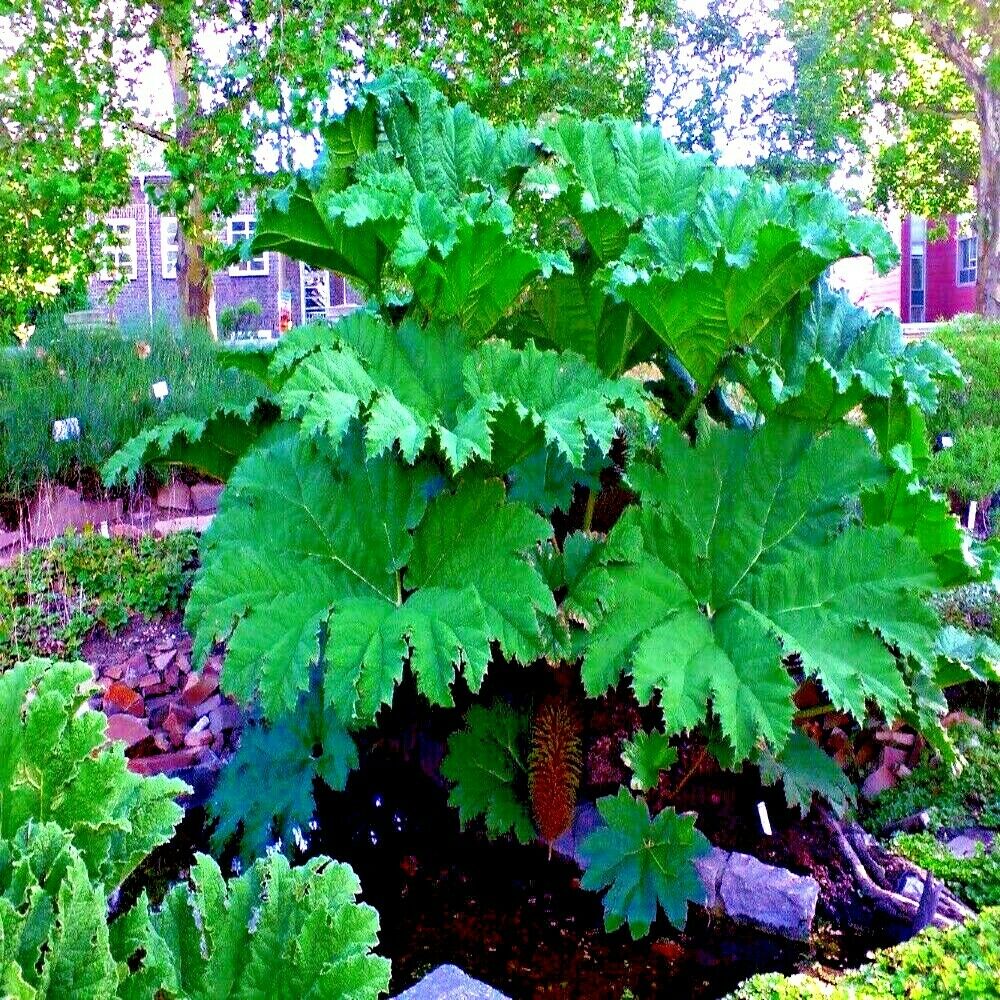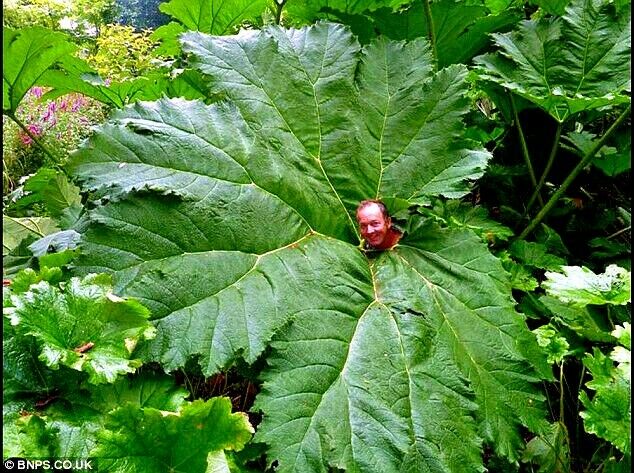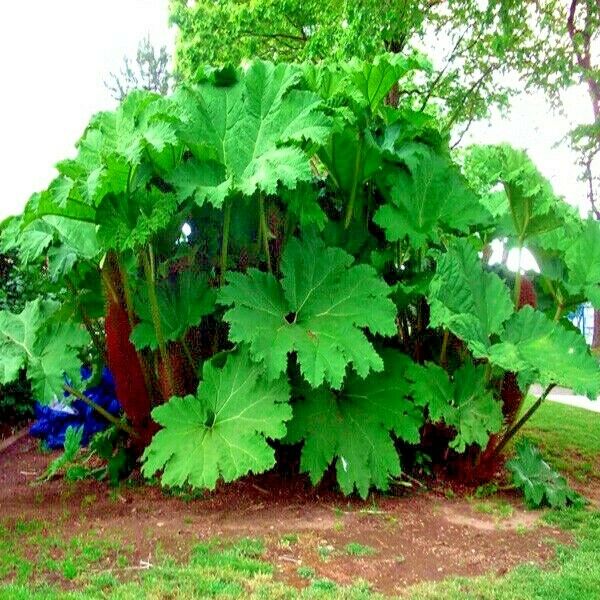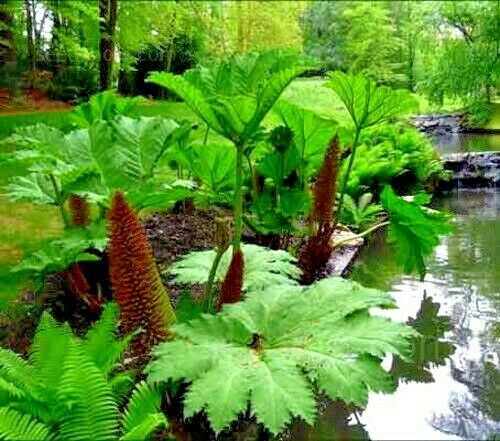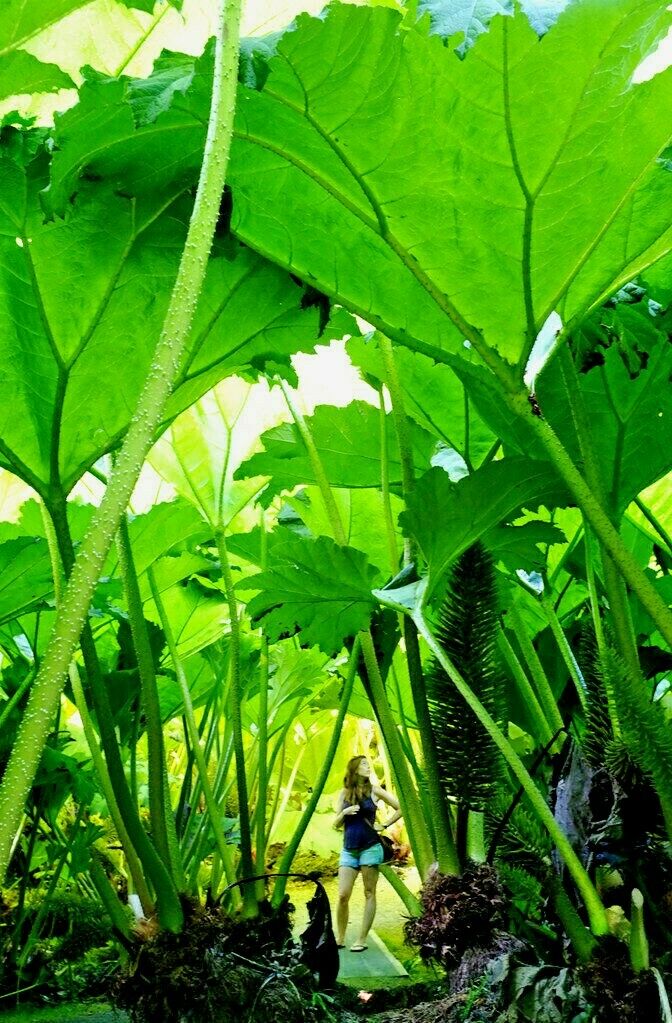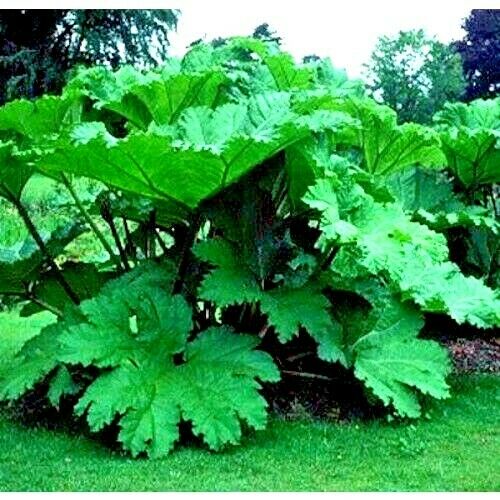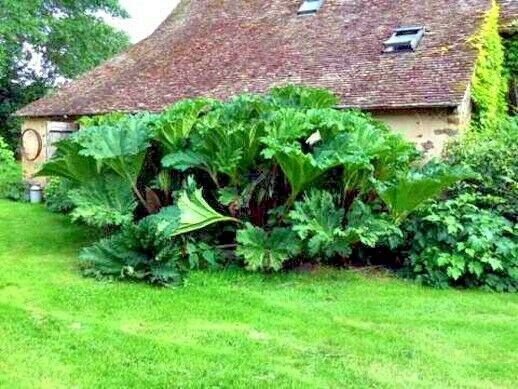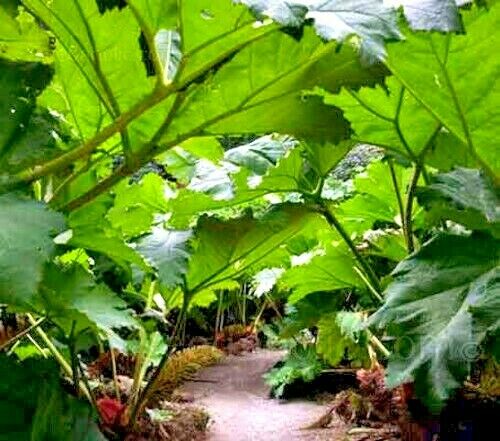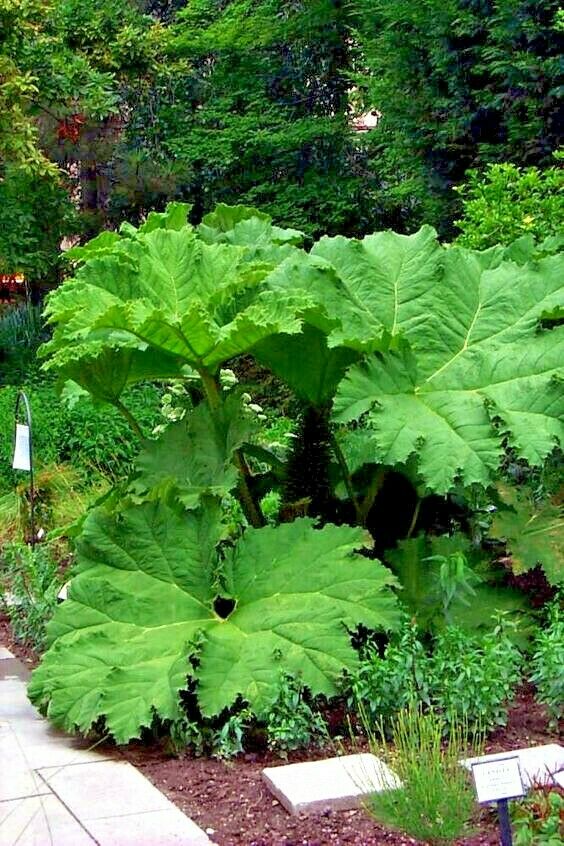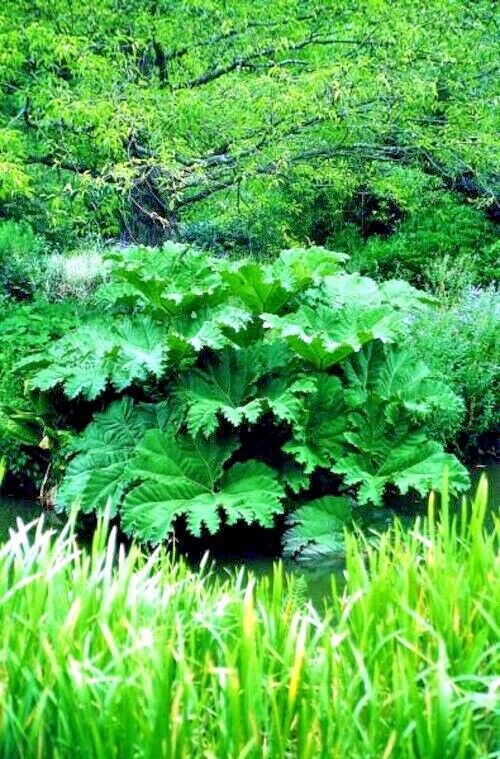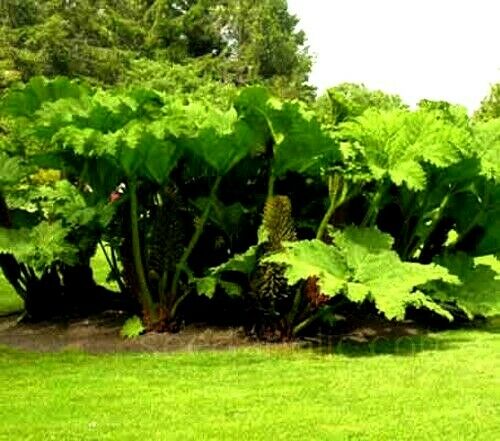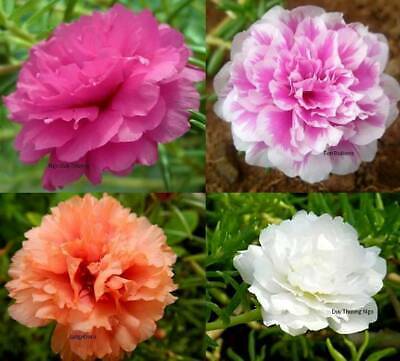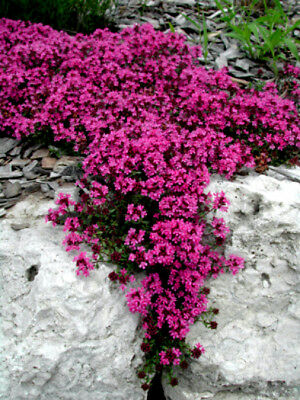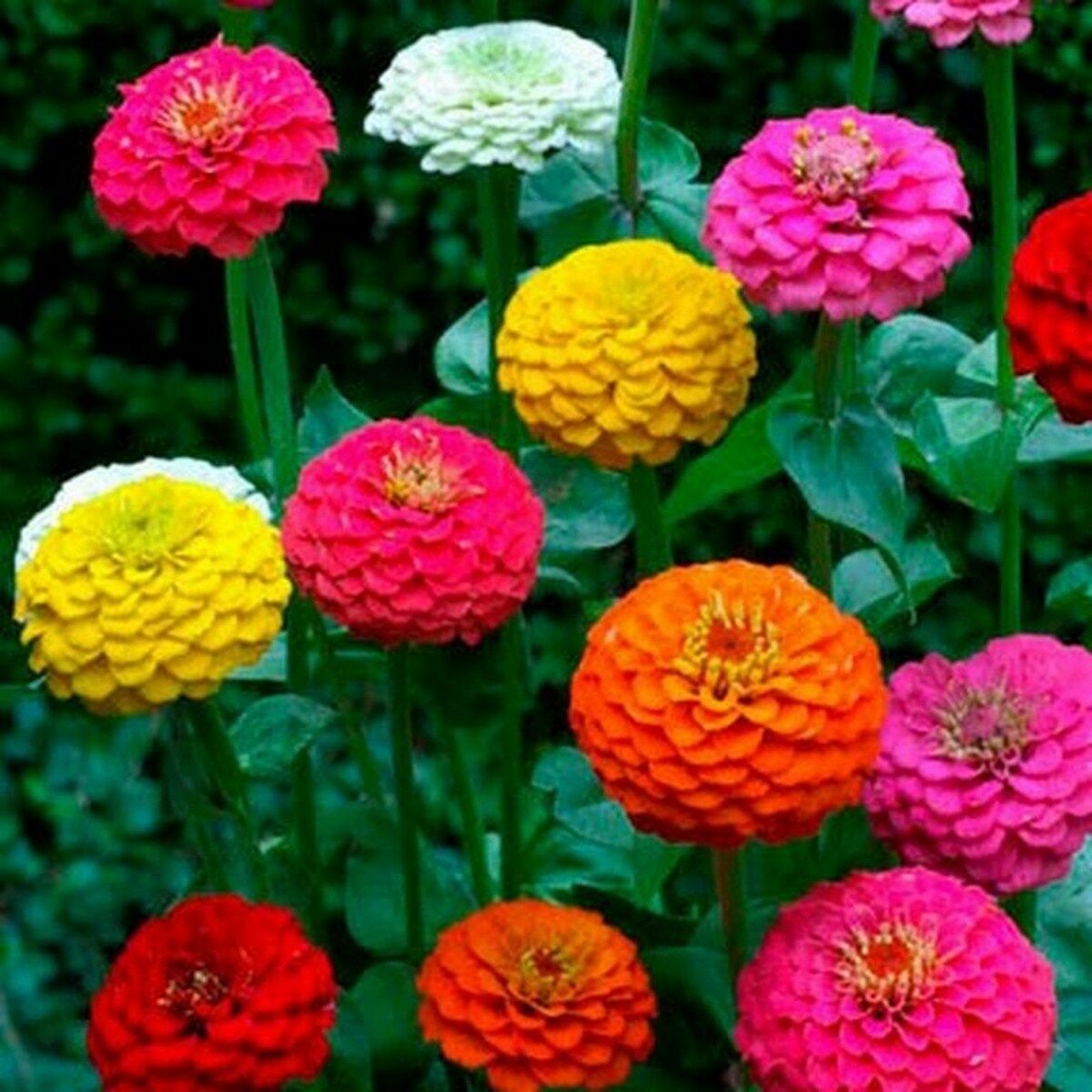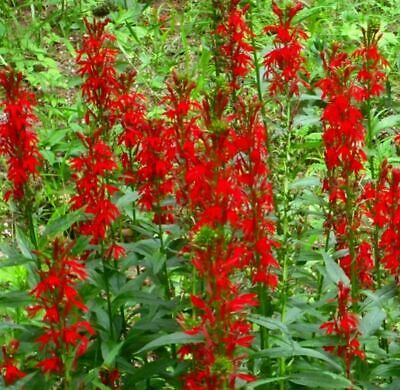-40%
25 Exotic Gunnera manicata Dinosaur Food Seeds Giant Rhubarb Flowering Plant
$ 4.72
- Description
- Size Guide
Description
25 Exotic (Gunnera manicata) "Dinosaur Food" SeedsGiant Rhubarb
is One of the Most Enormous and Spectacular, Architectural, Herbaceous Plants on Earth. Thought to be around 150 Million Years Old and First introduced into Europe in the 1860′s it if often called Dinosaur Food or Giant Rhubarb due to its Gigantic, Deeply Lobed, Deep Green Leaves, which Grow up to 6' Feet Across.
This is the Granddaddy of Big-Leaved Perennials. No other Plant can so Thoroughly Alter the Scale of a Garden while Calling such Attention to Itself.
The Architectural Leaves Grow up to 6 Feet across. They are Rounded and Deeply Toothed, and Sit atop Prickly Stalks that extend to 10 Feet Tall and Form Giant Clumps. Gunnera manicata Produces Large, Bottle-Brush Spikes of Tiny Reddish-Green Flowers in the Spring. It looks Particularly at Home at the Water's Edge and Thrives in it's Boggy Soil.
Gunneras Need a Lot of Space because it is Difficult to Restrict their Size. They Look Best Standing as Specimen Plants in a Damp Bog Garden, or beside a Large Pond where the Reflections Reveal the Undersides of the Leaves. The Stalks hold Tiny Red-Brown Flowers on Erect Panicles up to 3' Feet in Height, Followed by Small Red Berry-Like Fruits. The seed size is Incredibly Small One of the Most Gigantic Plants in the World, the Seeds are as Small as Poppy Seed.
The Fat Growth Buds Clustered in the Crown are Prone to Frost Damage, so Pile the Dead Leaves and Stems into a Mound over the Plants in Autumn for Winter Protection.
Gunnera manicata is Easy to Grow. Good Soil with Steady Moisture, by a Pond or Stream Perhaps, and a Great Deal of Space is All you Need to Enjoy this Magnificent Prehistoric Plant, but can be Planted anywhere in your yard as long as you keep the soil wet and do not let it dry. Gunneras can be grown in Zones 6 - 9b as long as adequate protection is provided in the fall before winter sets in. The most ideal zones would be 9-11.
Gunnera manicata Germination:
For best results store the seeds in the refrigerator until you're ready to germinate them. Always use gloves when handling seed because the oils from your hands can destroy the germination rate. Sow in a flat filled with good moistened compost mixed with vermiculite or perlite. Seeds should be lightly strewn at about one inch apart. Do not completely bury as these seeds need light for germination so you can simply lightly tamp them into soil or gently cover with a very thin fine layer of sand. Use a heated propagator under your seed tray & cover the tray with plastic or glass and place where temperatures are 68 to 77 degrees F. at all times. The best Gunnera seed propagation is achieved in warmer temperatures. Bottom heat from the heated propagator will help speed germination. Remove the plastic or glass once every day to allow air into the area and mist to keep moist. As with most all Exotic seeds germination can be erratic so patience will be required for them.
Germination cam be quite quick for some seeds sprouting within 15 days, while most others may take up to 60 days or longer. These Rare Prehistoric Giants are Definitely Worth the Wait!
Please Check out our Other Items!
Buy with Confidence as Customer Service is our #1 Priority and are available 7 days a week. If for any reason you feel as if we don't deserve a 5 Star Rating, please contact us and we will address any issues that may arrive.
SubCulture9

